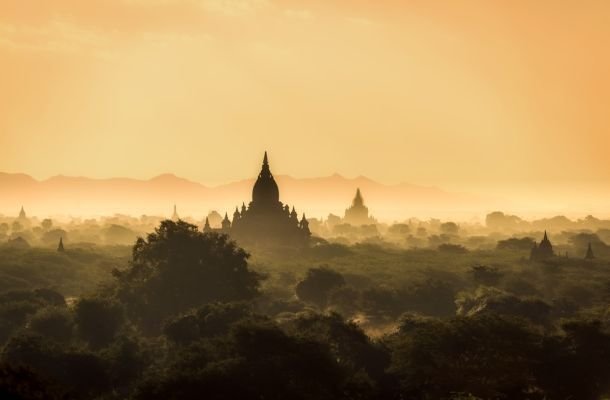Culture of Albuquerque, New Mexico

Albuquerque, New Mexico, is a city rich in cultural heritage, blending influences from Native American, Hispanic, and Anglo communities. As the largest city in the state, Albuquerque’s culture is a vibrant tapestry that reflects its diverse population, historical significance, and unique geography. This blog post explores the multifaceted culture of Albuquerque, offering an in-depth look at its art, music, festivals, cuisine, and more.
Historical Influence on Albuquerque’s Culture
Native American Heritage
Albuquerque’s culture is deeply rooted in Native American traditions, with a significant presence of Pueblo communities in and around the city. The city sits within the traditional homelands of the Pueblo people, who have lived in the region for thousands of years. Their influence is evident in Albuquerque’s art, architecture, and annual events.
Pueblo Communities
- Sandia Pueblo: Located just north of Albuquerque, Sandia Pueblo is one of 19 Pueblo communities in New Mexico. The Sandia people are known for their traditional crafts, such as pottery and beadwork.
- Isleta Pueblo: Situated south of the city, Isleta Pueblo has a rich cultural history. The Pueblo is famous for its beautiful mission church and traditional dances that are open to the public during feast days.
Hispanic Influence
The Spanish colonization of the region in the 16th century has left a lasting impact on Albuquerque’s culture. The city’s architecture, religious practices, and festivals bear the imprint of Hispanic traditions.
Colonial Architecture
- Old Town Albuquerque: Established in 1706, Old Town is the historic heart of the city, showcasing adobe buildings, Spanish-style plazas, and the San Felipe de Neri Church, the oldest building in the city.
Religious Traditions
- Catholicism: The predominant religion in Albuquerque, Catholicism influences many of the city’s festivals and community events.
- Feast Days: Various feast days are celebrated throughout the year, particularly in the nearby Pueblo communities, where visitors can experience traditional dances and rituals.
Anglo Influence
The arrival of Anglo settlers in the 19th century added another layer to Albuquerque’s cultural mosaic. The introduction of railroads and the subsequent influx of settlers brought new customs, educational institutions, and economic practices.
Educational Institutions
- University of New Mexico (UNM): Established in 1889, UNM is a cornerstone of Albuquerque’s intellectual and cultural life, contributing to the city’s arts, literature, and scientific research.
Albuquerque’s Art Scene
Visual Arts
Albuquerque has a thriving visual arts scene, with numerous galleries, museums, and public art installations. The city is known for its vibrant murals, contemporary art, and traditional Native American crafts.
Art Museums
- Albuquerque Museum: Located in Old Town, the Albuquerque Museum showcases the art and history of the Southwest, with a focus on local artists.
- Indian Pueblo Cultural Center: This museum offers exhibits on Pueblo art, culture, and history, featuring works by contemporary Native American artists.
Public Art
- Murals: Albuquerque is home to a vast array of murals that reflect its cultural diversity. These murals can be found throughout the city, often depicting scenes from Native American mythology, Hispanic heritage, and modern urban life.
- Sculptures: Public sculptures are scattered throughout Albuquerque, with notable pieces in Civic Plaza and along Central Avenue.
Performing Arts
The performing arts are an integral part of Albuquerque’s cultural life, with a variety of venues hosting theater, dance, and music performances.
Theaters and Performance Venues
- Popejoy Hall: Located on the UNM campus, Popejoy Hall is the largest performing arts venue in New Mexico, hosting Broadway shows, concerts, and dance performances.
- National Hispanic Cultural Center: This venue celebrates Hispanic arts and culture with a focus on theater, music, and dance from Latin America and Spain.
Music Scene
- New Mexico Philharmonic: Albuquerque is home to the New Mexico Philharmonic, which performs classical music concerts throughout the year.
- Local Bands and Musicians: The city’s music scene is diverse, ranging from mariachi bands to indie rock groups. Albuquerque’s nightlife is alive with music, particularly in the Nob Hill and Downtown areas.
Festivals and Events
Albuquerque hosts a variety of cultural festivals and events throughout the year, celebrating everything from Native American traditions to modern arts.
Annual Festivals
Albuquerque International Balloon Fiesta
- Overview: The Albuquerque International Balloon Fiesta is the city’s most famous event, attracting visitors from around the world. Held every October, it is the largest hot air balloon festival in the world.
- Cultural Impact: Beyond the balloons, the festival features music, arts, and crafts that highlight Albuquerque’s cultural diversity.
Gathering of Nations Powwow
- Overview: The Gathering of Nations is the largest powwow in North America, drawing Native American dancers, singers, and artisans from across the continent.
- Cultural Significance: This event is a celebration of Native American culture, offering a chance for visitors to experience traditional dances, music, and crafts.
New Mexico State Fair
- Overview: Held annually in September, the New Mexico State Fair is a showcase of the state’s agricultural, artistic, and cultural achievements.
- Cultural Activities: The fair features rodeos, traditional music performances, and exhibits that highlight the state’s multicultural heritage.
Cultural Events
Día de los Muertos
- Celebration: Día de los Muertos, or Day of the Dead, is widely celebrated in Albuquerque, particularly in the South Valley and Old Town. The event includes parades, altars, and traditional foods.
- Cultural Importance: This holiday reflects Albuquerque’s deep Hispanic roots, blending indigenous and Catholic traditions.
Flamenco Festival
- Overview: Albuquerque hosts one of the largest flamenco festivals outside of Spain, attracting performers and enthusiasts from around the world.
- Cultural Impact: The festival underscores the city’s connection to Spanish culture and its influence on local music and dance.
Albuquerque’s Cuisine
Albuquerque’s food scene is a flavorful blend of Native American, Hispanic, and modern influences. The city is famous for its New Mexican cuisine, which is distinct from traditional Mexican food.
New Mexican Cuisine
Signature Dishes
- Green Chile: Green chile is a staple in Albuquerque’s cuisine, used in everything from stews to burgers. The chile is often roasted and served as a sauce or topping.
- Red Chile: Another local favorite, red chile is made from ripened green chiles that are dried and ground into a powder. It’s used in enchiladas, tamales, and other dishes.
- Sopaipillas: These puffy, fried pastries are a traditional New Mexican dessert, often served with honey.
Popular Restaurants
- Frontier Restaurant: A beloved local institution, Frontier is famous for its green chile stew and cinnamon rolls.
- El Pinto: Known for its traditional New Mexican cuisine, El Pinto offers dishes like chile rellenos and carne adovada in a historic setting.
Fusion and Modern Cuisine
Contemporary Restaurants
- Los Poblanos Historic Inn & Organic Farm: This farm-to-table restaurant offers a modern take on New Mexican cuisine, using locally sourced ingredients.
- The Grove Café & Market: A popular spot for brunch, The Grove combines New Mexican flavors with contemporary American cuisine.
Local Markets
Farmers’ Markets
- Downtown Growers’ Market: Held every Saturday from April to November, this market features local produce, artisanal foods, and crafts.
- Rail Yards Market: Located in a historic rail yard, this market offers a mix of food vendors, live music, and art.
Cultural Institutions
Museums
Albuquerque is home to a wide array of museums that reflect its diverse cultural heritage.
Albuquerque Museum
- Exhibits: The museum offers permanent and rotating exhibits on the history and art of Albuquerque and the Southwest.
- Programs: The museum hosts educational programs, workshops, and community events.
Indian Pueblo Cultural Center
- Exhibits: This museum provides insight into the culture, history, and art of the Pueblo people.
- Cultural Events: The center hosts traditional dances, art demonstrations, and lectures.
New Mexico Museum of Natural History and Science
- Exhibits: Focusing on the natural history of New Mexico, this museum features dinosaur fossils, geological exhibits, and a planetarium.
- Educational Programs: The museum offers a range of educational programs for children and adults.
Cultural Centers
National Hispanic Cultural Center
- Mission: The center is dedicated to preserving and promoting Hispanic culture through the arts.
- Events: The center hosts exhibitions, performances, and educational programs throughout the year.
KiMo Theatre
- Architecture: The KiMo Theatre is a landmark in Albuquerque, known for its Pueblo Deco architecture.
- Performances: The theater hosts a variety of cultural events, including film screenings, concerts, and theatrical performances.
Traditional Arts and Crafts
Native American Crafts
Albuquerque is a hub for Native American arts and crafts, with many artisans selling their work at markets and galleries throughout the city.
Pottery
- Pueblo Pottery: Pueblo pottery is a highly prized art form, known for its intricate designs and traditional techniques. The Indian Pueblo Cultural Center offers a wide selection of pottery from local artists.
Jewelry
- Turquoise: Turquoise jewelry is a significant part of Native American culture in Albuquerque. Many local artisans create handcrafted pieces using turquoise, silver, and other natural materials.
Hispanic Crafts
Hispanic artisans in Albuquerque continue to practice traditional crafts passed down through generations.
Tinwork
- Traditional Tinwork: Tinwork is a unique art form in New Mexico, often seen in the form of ornate mirrors, lanterns, and frames. Local artisans create pieces that reflect the region’s Spanish colonial heritage.
Retablos
- Religious Art: Retablos are small devotional paintings, typically depicting saints or religious scenes. This art form has its roots in Spanish colonialism and remains a significant part of Albuquerque’s cultural heritage.
Albuquerque’s Cultural Neighborhoods
Old Town
Old Town is the historic and cultural heart of Albuquerque, with its cobblestone streets, adobe buildings, and central plaza. The neighborhood is home to many of the city’s most significant cultural landmarks, including the Albuquerque Museum and the San Felipe de Neri Church.
Nob Hill
Nob Hill is a vibrant, eclectic neighborhood known for its artsy vibe and historic Route 66 architecture. The area is a hub for Albuquerque’s music, dining, and nightlife scenes, with a variety of shops, galleries, and restaurants.
Downtown
Downtown Albuquerque is the city’s business and cultural center, featuring a mix of modern high-rises and historic buildings. The area is home to many of the city’s theaters, museums, and cultural events, including the annual Downtown Summerfest.
Barelas
The Barelas neighborhood is one of Albuquerque’s oldest and most culturally rich areas. It is home to the National Hispanic Cultural Center and has a strong sense of community, with many residents tracing their roots back several generations.
Albuquerque’s Role in Film and Media
Film Industry
Albuquerque has become a significant player in the film industry, thanks in part to its unique landscapes and the presence of major film studios.
Breaking Bad and Better Call Saul
- Cultural Impact: Albuquerque gained international fame as the setting for the television series Breaking Bad and its spin-off Better Call Saul. The shows have become a part of the city’s cultural identity, with fans visiting filming locations throughout the city.
Albuquerque Studios
- Hollywood of the Southwest: Albuquerque Studios is one of the largest film production facilities in the United States, attracting major film and television productions to the city.
Local Media
Albuquerque has a diverse media landscape, with several local newspapers, television stations, and radio stations serving the community.
Newspapers
- Albuquerque Journal: The city’s primary daily newspaper, covering local news, culture, and events.
- Weekly Alibi: An alternative weekly newspaper that focuses on arts, entertainment, and cultural commentary.
Television and Radio
- KUNM: A public radio station affiliated with UNM, KUNM offers a mix of news, music, and cultural programming.
- Local TV Stations: Albuquerque is served by several local television stations, including KRQE, KOAT, and KOB, which provide news and entertainment to the community.
Conclusion
Albuquerque’s culture is a vibrant and dynamic blend of influences, reflecting the city’s diverse population and rich history. From its Native American roots to its Hispanic traditions and modern artistic expressions, Albuquerque offers a unique cultural experience that is deeply connected to its geography, history, and people. Whether you’re exploring its art galleries, attending a festival, or enjoying a meal at a local restaurant, Albuquerque’s culture is sure to leave a lasting impression.
Find us
Tuesday
Wednesday
Thursday
Friday
Saturday
Sunday
10 am – 10 am
10 am – 10 am
10 am – 10 am
10 am – 10 am
10 am – 10 am
10 am – 10 am









